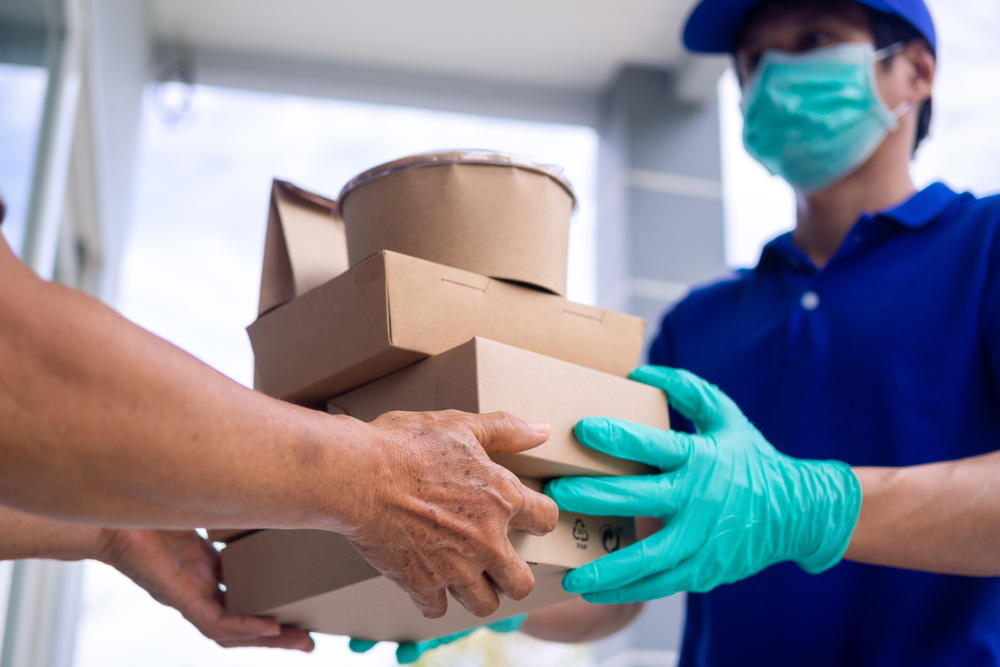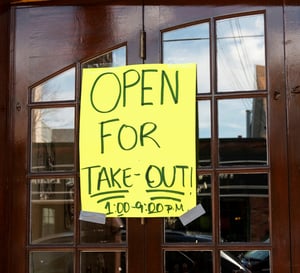
With COVID-19 we are seeing unprecedented trends in foodservice. No longer does the dining room reign as the way customers consume prepared meals. Cafeterias have permanently closed down, many restaurants have placed in-door dining on hold and with most people working from home, daytime foodservice operations are temporarily suspended.
 So what happened? Many businesses that wanted to remain open pivoted quickly to implement an effective delivery/pickup program. “Takeaway” food is now the new norm for purchasing prepared meals. This rapidly became the way of life for foodservice and the model was quickly embraced by customers. Food delivery in 2020 skyrocketed due to the pandemic and, according to Forbes, revenue from online food delivery will supersize to a hefty $200 billion by 2025.
So what happened? Many businesses that wanted to remain open pivoted quickly to implement an effective delivery/pickup program. “Takeaway” food is now the new norm for purchasing prepared meals. This rapidly became the way of life for foodservice and the model was quickly embraced by customers. Food delivery in 2020 skyrocketed due to the pandemic and, according to Forbes, revenue from online food delivery will supersize to a hefty $200 billion by 2025.
As food delivery pickup gains momentum, foodservice organizations are challenged in both getting food to the customer and providing food that is just as safe and high quality as it would be in the dining room. Food preparation has always been important – compliance with food safety regulations remains essential -- but the stakes are now higher. Food preparation can be the difference between a one-time sale and a repeat customer. People want to be confident that their food is prepared properly and that the kitchen is completely clean, sanitized and safe.
 It goes without saying that there should be no compromise in food safety procedures. Significant business impact can result if staff do not sufficiently prioritize food safety, and any decrease or cessation of food safety processes could lead to a foodborne illness outbreak. With COVID-19 already taking a toll on the foodservice industry, any foodborne illness outbreak would be a catastrophic blow.
It goes without saying that there should be no compromise in food safety procedures. Significant business impact can result if staff do not sufficiently prioritize food safety, and any decrease or cessation of food safety processes could lead to a foodborne illness outbreak. With COVID-19 already taking a toll on the foodservice industry, any foodborne illness outbreak would be a catastrophic blow.
It now becomes a balancing act to make sure food is safe, quality is high and sanitation processes are properly enforced when delivering food. This is where it helps to have a digital food safety and task management solution. By automating all procedures, a foodservice business can ensure that staff is following proper processes, finding and resolving issues quickly and notifying management when corrective actions are required. Such a solution reduces the risk of food being prepared incorrectly, including not adhering to appropriate temperature requirements. Automation identifies when proper procedures and processes are not being carried out correctly, allowing adjustments to be made in order to deliver safe, quality food to the customer.
 It appears that “Takeaway” food will be with us for a long, long time. A digital food safety and task management solution can provide peace of mind to foodservice operators and make sure the takeaways keep coming back for more.
It appears that “Takeaway” food will be with us for a long, long time. A digital food safety and task management solution can provide peace of mind to foodservice operators and make sure the takeaways keep coming back for more.
These Stories on Food Safety
Procurant USA LLC
475 Alberto Way - Suite 230
Los Gatos, CA 95032
1-669-221-1026
info@procurant.com
